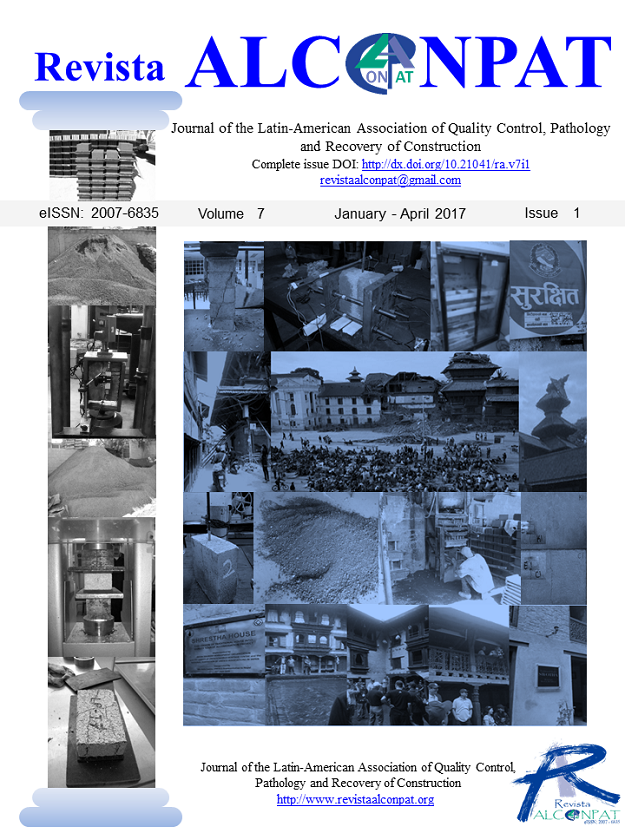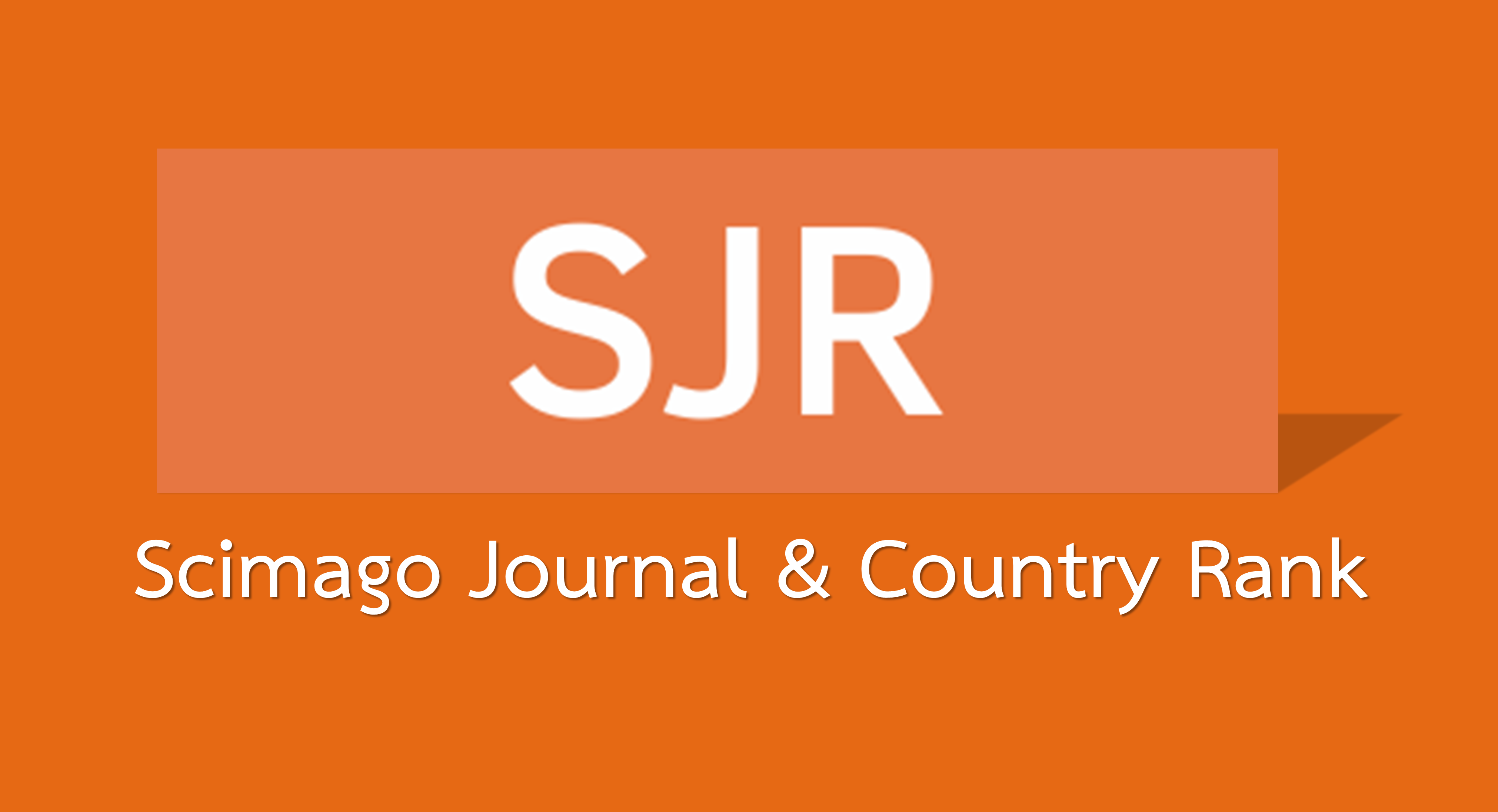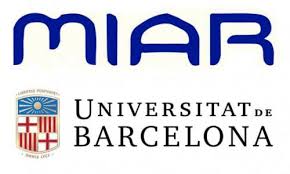Sustainability evaluation of different techniques for concrete mixing based on quality control
DOI:
https://doi.org/10.21041/ra.v7i1.175Keywords:
emergy analysis, environmental accounting, sustainability, transformity, concreteAbstract
In this study emergy analysis, an environmental valuation method was applied to concrete mixing with the purpose of evaluating its dependence on non-renewable natural resources. Three concrete mixing techniques, industrialized, semi-industrialized and manual, were evaluated based on quality control. The quantity of environmental resources used in production was measured in terms of equivalent solar energy. The resulting transformities were compared to show that emergy analysis is sensible to local context and the limits of the reference system. The results obtained show that concrete mixing is highly dependent on external resources. Semi-industrialized concrete was found to be the most sustainable.
Downloads
References
Ascione, M., Campanella, L., Cherubini, F., & Ulgiati, S. (2009). Environmental driving forces of urban growth and development. An emergy-based assessment of the city of Rome, Italy. Landscape and Urban Planning, 93(3–4), 238–249.
Abel, T. (2015). Convergence and divergence in the production of energy transformation hierarchies. Ecological Modelling, 4–11.
Agostinho, F., Bertaglia, A., Almeida , C., & Gianett, B. (2015). Influence of cellulase enzyme production on the energetic–environmental performance of lignocellulosic ethanol. Ecological Modelling, 46–56.
Aguilar Rivera, N., Alejandre Rosas, J., & Espinosa López, R. (2015). Evaluación emergy Y LCA en la agroindustria azucarera de Veracruz, México. INCA Cultivos Tropicales, 2015, vol. 36, no. 4, 144-157.
Bargigli, S., & Ulgiati , S. (2003). Emergy and Life-Cycle assesment of steel production in Europe. Gainesville, Florida, E.U.: University of Florida.
Bastianoni , S., Galli , A., Pulselli , R. M., & Niccolucci, V. (2007). Environmental and economic evaluation of natural capital appropriation through building construction: practical case study in the Italian context. Ambio.
Bastianoni, S., Morandi, F., Flaminio, T., Pulselli, R. M., & Tiezzi, E. B. (2011). Emergy and emergy algebra explained by means of ingenuous set theory. Ecological Modelling, 2903– 2907.
Berardi, U. (2012). Sustainability assessment in the construction sector: rating systems and rated buildings. Sustainable Development, 411-424.
Björklund, J., Geber, U., & Rydberg, T. (2001). Emergy analysis of municipal wastewater treatment and generation of electricity by digestion of sewage sludge. Resources, Conservation and Recycling, 293 - 316.
Brown , M. T., & Buranakarn, V. (2003). Emergy indices and ratios for sustainable material cycles and recycle options. Resources, Conservation and Recycling, 1 - 22.
Brown , M. T., Odum , H. T., & Jorgensen , S. E. (2004). Energy hierarchy and transformity in the universe. Ecological Modelling, 17 - 28.
Brown , M., & Ulgiati , S. (2004). Emergy Analysys and Environmental Accounting. Earth Systems and Environmental Sciences, 329 - 354.
Brown, M. T., & McClanahan, T. R. (1992). Emergy analysis perspectives of Thailand and Mekong river dam proposals. Final Report to the Cousteau Society. Gainesville, FL.: Center for Wetlands and Water Resources, University of Florida.
Buranakarn, V. (1998). Evaluation of recycle and reuse of building materials using the emergy analysis method. Ph.D. Dissertation. University of Florida, FL.
Burón Maestro, M. (2012). El hormigón y la sostenibilidad en la normativa. Sostenibilidad: Eficiencia Energética, Evaluación de edificios y estructuras. Madrid, España: IECA.
Campbell, E. (2015). Emergy analysis of emerging methods of fossil fuel production. Ecological Modelling, 57–68.
CEIEG. (2016). Comité Estatal de Información Estadística y Geográfica. Gobierno del Estado de Chiapas. Obtenido de http://www.ceieg.chiapas.gob.mx/perfiles/Inicio
Doherty, S. J., Scatena, F. N., & Odum, H. T. (1994). Emergy Evaluation of the Luquillo Experimental Forest and Puerto Rico. Final Report to International Institute of Tropical Forestry. Rio Piedras, Puerto Rico.
Emergy Synthesis, 8. (2015). Emergy and environmental accounting: Theories, applications, and methodologies. Ecological Modelling, 1-3.
Ferreira C, Ó. I., Hurtado S, M. d., García, E., Bonilla Correa, C. R., & M. Rao, I. (2010). Emergía de tres sistemas agroforestales en el sur del municipio. ACTA AGRONÓMICA. 59 (3), 327-337.
Guillén, H. A. (1998). Sustainability of Ecotourism and Traditional Agricultural Practices in Chiapas, México. Gainesville, Florida, E.U.: Tesis Doctoral.
Gutierrez, L. (2003). El concreto y otros materiales para la construcción. Manizales, Colombia.: Centro de publicaciones de la Universidad Nacional de Colombia Sede Manizales.
Hamza, N., & Horne, M. (2007). Educating the designer: An operational model for visualizing low-energy architecture. . Building and Environment, 3841-3847.
INEGI. (2015). Encuesta mensual de la industria manufacturera. Estadísticas históricas de México 2014-2015.
Josa, A., Aguado, A., Cardim , A., & Byars, E. (2007). Comparative analysis of the life cycle impact assessment of available cement inventories in the EU. Cement Concrete Research, 781 - 788.
Josa, A., Aguado, A., Heino, A., Byars, E., & Cardim, A. (2004). Comparative analysis of available life cycle inventories of cement in the EU. Cement Concrete Research, 1313 - 1320.
Kjellsen , K., Guimaraes , M., & Nilsson, A. (2005). The CO2 Balance of Concrete in a Life Cycle Perspective. Danish Technological-DTI.
Lacarrière, B., Deutz, K., Jamali Zghal , N., & Le Corre, O. (2015). Emergy assessment of the benefits of closed-loop recycling accounting for material losses. Ecological Modelling, 77–87.
Li, L., Lu, H., Tilley , D., & Qiu, G. (2014). Effect of time scale on accounting for renewable emergy in ecosystems located in humid and arid climates. Ecological Modelling, 1–8.
López Villalobos, I. D., & Rodríguez Salcedo, J. (2013). Análisis energético de la sostenibilidad ambiental del municipio de Palmira (Colombia). Revista de Investigación Agraria y Ambiental. Vol. 4 No. 2.
Mendoza Sánchez, J. F. (2014). Criterios de sustentabilidad para carreteras en México. Sanfandila: Publicación Técnica No. 392, Instituto Mexicano del Transporte.
Morandi, F., Campbell, D. E., Pulselli, F. M., & Bastianoni, S. (2015). Emergy evaluation of hierarchically nested systems: application to EU27 Italy and Tuscany and consequences for the meaning of emergy indicators. Ecological Modelling, 12–27.
Mu, H., Feng, X., & Chu, K. H. (2012). Calculation of emergy flows within complex chemical production systems. Ecological Engineering, 88– 93.
Nazar, M. (2013). Estimación de las emisiones de gases de efecto invernadero atribuibles a la construcción de viviendas multifamiliares de interés social. Tuxtla Gutiérrez, Chiapas: Tesis Doctoral.
Nisbet , M., & Van Geem, M. G. (1997). Environmental life cycle inventory of Portland cement and concrete. World Cement, 3.
Odum, H. T. (1971). Environment. Power and Society. Wiley, New York, NJ.
Odum, H. T. (1983). Environment. Power and Society. Wiley, New York, NJ.
Odum, H. T. (1988). Self organization, transformity and information. Science, 1132 - 1139.
Odum, H. T. (1996). Environmental Accounting Emergy and Environmental Decision Making. New York, NJ.: Johl Wiley and Sons, Inc.
Ortega Rodríguez, E., Vallim de Melo, C., & Del Pozo Rodríguez P, P. (2014). El análisis emergético como herramienta para evaluar la sustentabilidad en dos sistemas productivos. Revista Ciencias Técnicas Agropecuarias Vol. 23, No. 4, 59-63.
Pade , C., & Guimaraes, M. (2007). The CO2 uptake of concrete in a 100 year perspective. Cement Concrete Research, 1348-1356.
Pulselli , R. M., Simoncini , E., F.M. Pulselli, F. M., & Bastianoni, S. (2007). Emergy analysis of building manufacturing, maintenance and use: Em-building indices to evaluate housing sustainability. Energy and Buildings, 620-628.
Pulselli , R. M., Simoncini, E., Ridolfi, R., & Bastianoni, S. (2008). Specific emergy of cement and concrete: An energy-based appraisal of building materials and their transport. Ecological Indicators, 647 - 656.
Ruiz de Arbulo Lopez, P., Landeta Manzano, B., Díaz de Basurto Uraga, P., & Arana Landín, G. (2016). Adopción de Sistemas de Gestión de Ecodiseño en el sector de la construcción. Análisis de la perspectiva de los diferentes agentes involucrados. Dyna, 124-133.
Suca A, F., Suca A, A., & Siche J, R. (2014). Análisis emergético del café peruano. Revista Peruana de Química e Ingeniería Química Vol. 17 N.º 1, 43-57.
Tennenbaum, S. E. (2015). Emergy and co-emergy. Ecological Modelling, 116–134.
Tilley, D. R. (2015). Transformity dynamics related to maximum power for improved emergy yield estimations. Ecological Modelling, 96–107.
Vega, L., Ordoñez, J., & Pinilla , G. (2013). Towards a systemic assessment of environmental impact (SAEI) regarding alternative hydrosedimentological management practice in the Canal del Dique, Colombia. Ingeniería e Investigación, 41-48.
Vilbiss , C., & Brown, M. (2015). New method to compute the emergy of crustal minerals. Ecological Modelling, 108–115.
Vold, M., & Ronning, A. (1995). LCA of Cement and Concrete. Stiftelsen.
Wright, C., & Ostergard, H. (2015). Scales of renewability exemplified by a case study of three Danish pig production systems. Ecological Modelling, 28–36.
Wu, X., Wu, F., Tong, X., Wu, J., Sun, L., & Peng, X. (2015). Emergy and greenhouse gas assessment of a sustainable, integrated agricultural model (SIAM) for plant, animal and biogas production: Analysis of the ecological recycle of wastes. Resources, Conservation and Recycling, 40-50.
Zarba, L., & Brown , M. T. (2015). Cycling emergy: computing emergy in trophic networks. Ecological Modelling, 37–45.
Published
How to Cite
Issue
Section
License
_______________________________
License in effect from September 2020
You are free to:
- Share — copy and redistribute the material in any medium or format for any purpose, even commercially.
- Adapt — remix, transform, and build upon the material for any purpose, even commercially.
- The licensor cannot revoke these freedoms as long as you follow the license terms.
Under the following terms:
- Attribution — You must give appropriate credit , provide a link to the license, and indicate if changes were made . You may do so in any reasonable manner, but not in any way that suggests the licensor endorses you or your use.
- No additional restrictions — You may not apply legal terms or technological measures that legally restrict others from doing anything the license permits.
Notices:
You do not have to comply with the license for elements of the material in the public domain or where your use is permitted by an applicable exception or limitation .
No warranties are given. The license may not give you all of the permissions necessary for your intended use. For example, other rights such as publicity, privacy, or moral rights may limit how you use the material.





















.png)














